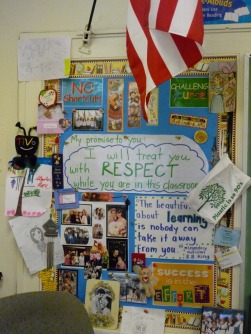INQUIRY AND DESIGN
• Develop curricula, policies, and learning environments based on the HTH design principles (personalization, real-world connection, and common intellectual mission).
• Draw upon students' diverse backgrounds and learning styles to enhance teaching and learning.
• Conduct inquiry that enriches practice and contributes to the knowledge base of teaching and learning.
• DIFFERENTIATION IN WRITING LESSON: http://docs.google.com/View?id=dg7jb7kd_9htjgk7c4
Summary
The link above will take you to a lesson that I developed through experiences in our Inclusive Classrooms course. The lesson is differentiated for learning styles (practical, analytical, and creative). Developing, teaching, and analyzing this lesson gave me the beginnings of what would become my action research question.
• EXPLORING "BEAUTIFUL WORK": http://docs.google.com/View?id=dg7jb7kd_4z6spbvfv
Summary
Reading the work of Ron Berger has profoundly influenced my teaching this year. It has changed the way I think about lesson and project design. In speaking with my students at the end of the school year, I was pleased to discover that they will be leaving my class with a strong idea of what it means to create beautiful work.
• EXTENDED FIELD NOTES (PRACTICE): http://docs.google.com/View?id=dg7jb7kd_13hc74cmgx
Summary
During our Action Research Methods and Design course, I was given the opportunity to practice many different ways of collecting and analyzing data. One way that worked particularly well for me was observation field notes. on this day, I observed students working in a mini-project during an English class. I plan to use field notes next year in the data collection phase of my action research.

